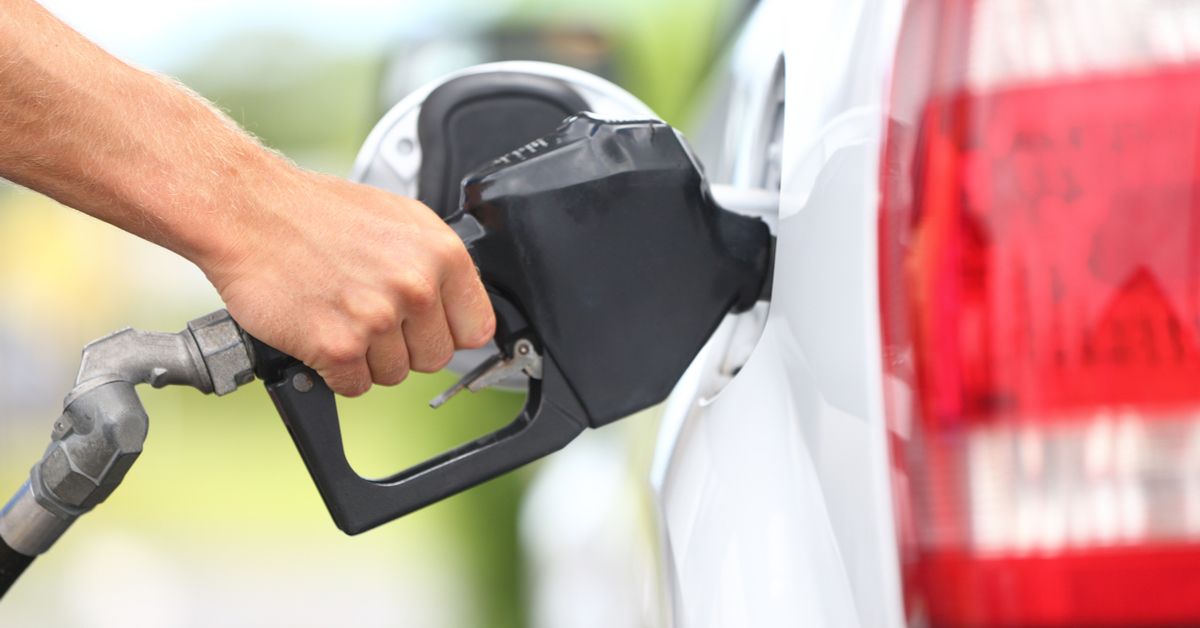A triangle-shaped arrow indicator adjacent to a dashboard gas pump icon indicates which side a vehicle's fuel door is on.
The placement of the pump handle on a dashboard gas pump icon indicates which side a vehicle's fuel door is on.
Origin
Way back in the olden days of 2007, readers were asking us about this much-circulated bit of helpful advice concerning automobile fuel level displays:
I have been driving for many years. One would think I would have noticed the little secret on my dash that was staring me right in the face the whole time. I didn't and I bet you probably haven't either.
Quick question, what side of your car is your gas tank? You probably can't remember right away especially if you drive more than one car or if you do a rental while on vacation.
My solution was to uncomfortably stick my head out the window, strain my neck and look. If you don't do this in your own car you definitely have done it in a borrowed or rental car.
If you look at your gas gauge, you will see a small icon of a gas pump. The handle of the gas pump will extend out on either the left or right side of the pump.
If your tank is on the left, the handle will be on the left. If your tank is on the right, the handle will be on the right (see attached images).
It is that simple!
Why don't the dealers share such important information with car buyers? I have on purpose asked many car salesmen since I found this out and 'THEY DON'T EVEN KNOW THIS - NOT ONE DID'.
As anyone who has driven a rental car well knows, it is indeed useful to have some sort of indicator on the instrument panel that reveals which side to refuel on. Sadly, "The World's Best Kept Auto Secret" (as the e-mail was often titled) was a bit of misinformation or a misunderstanding: while the indicator it described was real, the "The World's Best Kept Auto Secret" message misidentified its nature.
The nozzle-and-hose side of the fuel level (or "low fuel") indicator, which is usually presented as an icon depicting a gas pump, doesn't consistently correspond with the side of the car where the fuel door is to be found, nor does its placement on the instrument array (left side versus right side) tell whether you should bring the passenger's or driver's side up next to the pumps at your local gas station.
There's no magic to it. Although "The World's Best Kept Auto Secret" will prove true for some vehicles, it won't for others, it's akin to the many folkloric "tests" for determining an unborn child's sex, it has only two outcomes (the icon's nozzle-and-hose side and the side the vehicle's fuel door is on match or they don't), so this "secret" will work sometimes but not always. (Yes, we know that some vehicles have their fuel doors in the back, but there are so few of them that for the purpose of this discussion we might as well ignore that possibility.)
The fuel icons in modern cars do inform drivers which side to refuel on, but it's not the placement or shape of the fuel icon that carries that information: Nearly all newer models of automobiles include a small arrow or triangle next to the fuel icon that indicates which side of the vehicle bears the fuel door. As seen in the graphic example displayed below, sometimes the arrow and fuel handle are on opposite sides of the icon; it's the former, not the latter, that signifies where the gas cap is:
![]()
There's no agreement among auto manufacturers as to which side the gas cap should be on (which, if they would just choose one side or the other, would solve the whole problem right there: you'd then always know which side of your vehicle to park closest to the pump). It would make more sense to consistently position the aperture on the passenger's side, both because it's easier to get out of your vehicle when you don't have to weasel your bulk past the gas pump you've just parked next to, and because should you run out of gas on the highway, it's a lot safer to pour more in when you're not standing next to the traffic whizzing by you.
An argument can also be made for placing the gas cap on the rear of vehicles. Were it there, you would no longer need be concerned about getting any particular side of your car sidled up to the pump: provided the rear of the vehicle were somewhat close to the refueling array, it wouldn't matter if the gas pump island were to the left or the right.
Yet another solution would be to have two fuel entry doors, one on each side. That notion, however, fails on cost. According to Rick Asher, a spokesman for General Motors, the cost of putting a gas cap on both sides of a vehicle would far exceed the value of the added convenience for the vast majority of people.
Which leaves us right back where we started, which is having to make mental note of which side a vehicle's fuel door is on when driving rentals or other cars unfamiliar to us (or try checking the side-view mirrors to see where it is before pulling up to the pumps).

